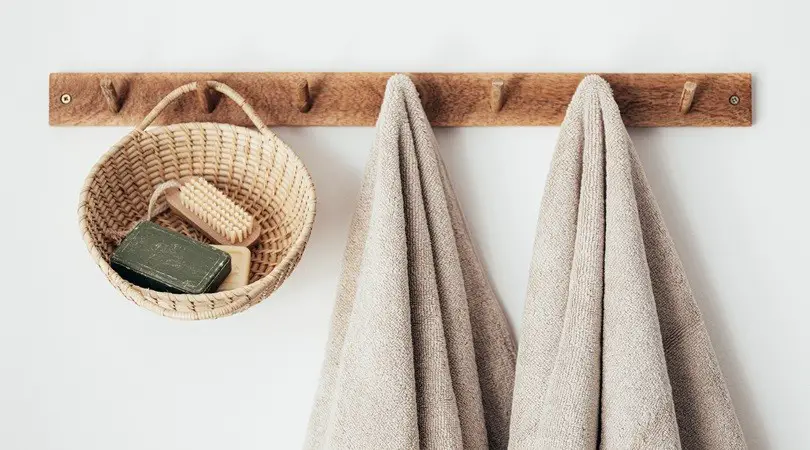Last Updated on January 6, 2025
Making a bathroom more accessible is not just a matter of convenience; it is vital for ensuring safety and fostering independence within the home. This is especially true for individuals with mobility issues or disabilities. As we age or face changes in our physical abilities, the design of our homes, and particularly the bathroom, becomes increasingly important.
Thoughtfully designed, an accessible bathroom significantly reduces the risk of falls and injuries. It also provides a level of comfort and ease of use that is essential in daily life. In this article, we will explore eight practical tips designed to help you transform your bathroom into a space that is both safe and accessible, effectively catering to the needs and preferences of all individuals.
1. Bathtub To Shower Conversion
One of the most significant steps in making a bathroom more accessible is converting a traditional bathtub into a shower. This modification is vital for individuals who find it challenging to step over a bathtub wall. A walk-in shower, preferably with a zero threshold, allows for easy access, reducing the risk of slips and falls. When considering this conversion, it’s crucial to find a reputable and experienced contractor.
Begin your search by looking up a bathtub to shower conversion company near me to find local companies specializing in such conversions. It’s important to read reviews and check their portfolio to ensure they understand the specific requirements of accessible design. A good company should offer options like non-slip flooring, sturdy grab bars, and built-in seating. These features not only add to safety but also enhance the overall shower experience.
2. Installing Grab Bars And Handrails
Grab bars and handrails are essential for a safe and accessible bathroom. They provide support and stability for individuals with limited mobility, reducing the risk of falls. These aids should be installed not only in the shower or tub area but also near the toilet and along the bathroom walls.
When selecting grab bars, consider their diameter and the grip they provide. They should be comfortable to hold and strong enough to support the user’s weight. The finish and color can also be chosen to complement the bathroom’s décor. It’s important to have these bars professionally installed to ensure they are securely fixed and can bear the required load. The placement of these bars should be customized based on the user’s height and mobility needs.
3. Slip-Resistant Flooring
The bathroom floor is a common area for slips and falls, making slip-resistant flooring a critical aspect of an accessible bathroom. There are various options available, including textured tiles, rubber flooring, and vinyl. These materials provide better grip and stability, even when wet, which is crucial in a bathroom setting.
When choosing the flooring, consider both safety and maintenance. The surface should be easy to clean and resistant to mold and mildew. Additionally, the color and pattern of the flooring can play a role in the overall aesthetics of the bathroom. It’s also a good idea to choose a color that contrasts with the walls and fixtures to help those with visual impairments navigate the space more easily.
4. Adequate Lighting And Visibility
Good lighting in a bathroom is crucial for safety and ease of use. Poor lighting can increase the risk of accidents, especially for those with impaired vision. To ensure your bathroom is well-lit, install bright lights that don’t produce glare.
LED lights are a great option as they are energy-efficient and have a longer lifespan. Place lights overhead as well as around the mirror to eliminate shadows.
5. Accessible Sink And Vanity Design
An accessible sink and vanity are important for comfort and independence in the bathroom. The sink should be at a height that is easy to reach, whether standing or seated in a wheelchair. Consider installing a sink with clearance underneath to allow a wheelchair to fit comfortably. Faucets should be easy to turn, with lever handles or touchless technology being ideal choices. Also, ensure that the storage in the vanity is within reach, with lower shelves and pull-out drawers for easy access.
6. Toilet Modifications
Modifying the toilet can significantly increase the safety and accessibility of your bathroom. Installing a raised toilet seat can make it easier for individuals with mobility challenges to sit down and get up. Additionally, consider adding a toilet riser, which elevates the entire toilet. This is particularly helpful for taller individuals or those who find it difficult to use standard-height toilets. If space permits, ensure there’s enough room around the toilet for easy maneuverability, especially for those using walkers or wheelchairs.
7. Doorway Widening And Space Management
Bathrooms often have narrow doorways, which can be a barrier for wheelchair users. Widening the bathroom door is a critical step in creating an accessible space. If possible, consider installing a sliding or pocket door to save space. Additionally, keep the bathroom uncluttered to ensure there is enough room for easy movement. This might involve rethinking the layout and storage solutions in your bathroom to maximize open space.
8. Smart Technology For Enhanced Accessibility
Incorporating smart technology can greatly enhance the accessibility and convenience of a bathroom, especially for individuals facing mobility or dexterity challenges. Automated features such as voice-activated lights, temperature-controlled faucets, and automatic soap dispensers can provide significant assistance.
These innovative technologies not only aid in fostering independence for users but also bring a modern and technologically advanced touch to the bathroom environment.
Wrapping Up
Transforming your bathroom into an accessible space is a worthwhile investment in safety and independence. The tips outlined here can significantly improve the functionality and safety of your bathroom.
When making these modifications, it’s important to consider the specific needs of the individuals who will use the bathroom. Personalized adjustments can make a world of difference in usability and comfort. Also, while focusing on functionality, don’t overlook the aesthetics. An accessible bathroom can also be stylish and a pleasant space in your home.








